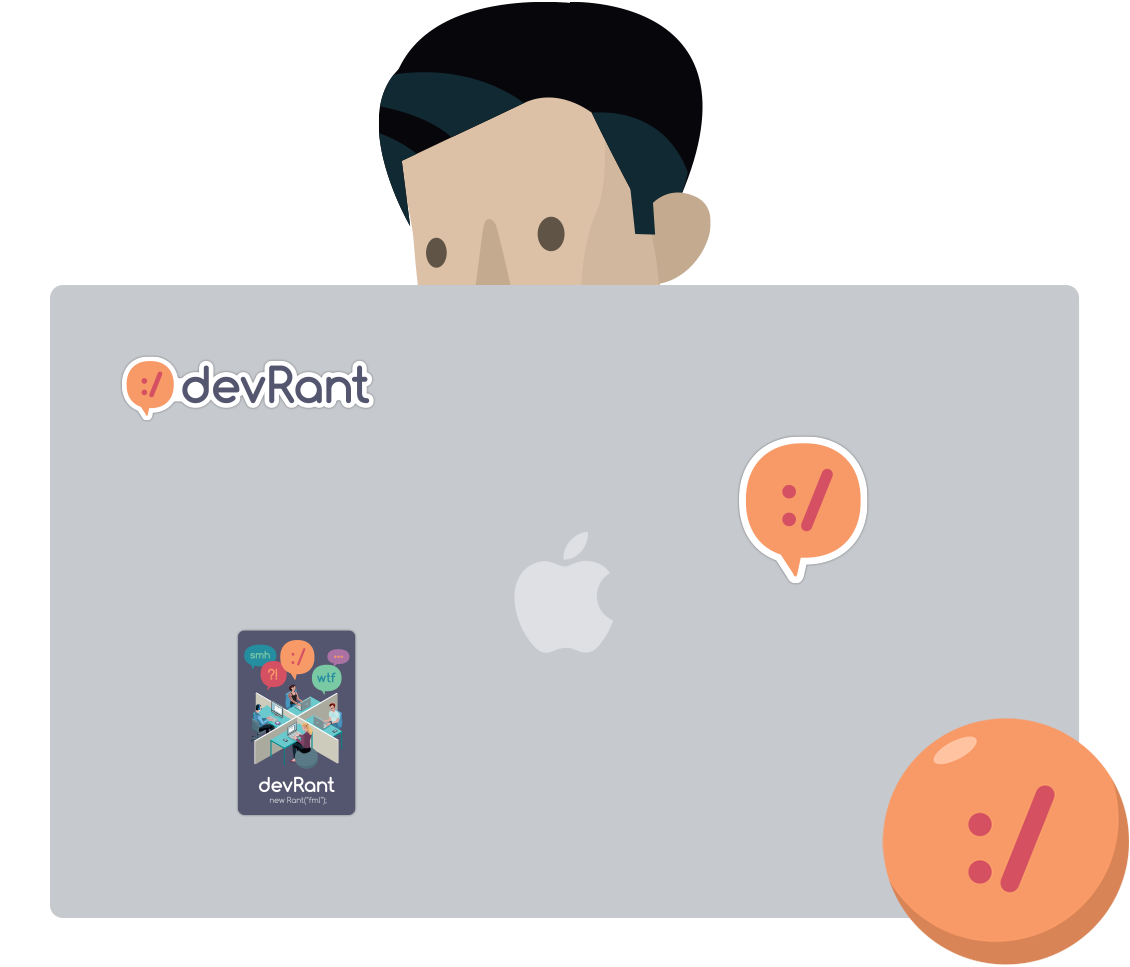Join devRant
Do all the things like
++ or -- rants, post your own rants, comment on others' rants and build your customized dev avatar
Sign Up
Pipeless API

From the creators of devRant, Pipeless lets you power real-time personalized recommendations and activity feeds using a simple API
Learn More
Search - "parsec"
-
For almost twenty years I have sheltered in the protective, safe, warm bosom of Debian. For a long time, it had the largest body of available software of all the distros, and by far when Ubuntu rose to prominence. So I used Ubuntu for years for the depth of package availability, and because if something esoteric was released, it would almost certainly come out first on Ubuntu, and sometimes only on Ubuntu. I was happy. Things were good.
But over time, Ubuntu and even Debian started to lean harder and harder on gnome, which I've always hated, along with all desktop environments, as they obscure the system from the user, and introduce graphical layers of abstraction, so the actual job of getting things done becomes a black art, hidden behind gnome-specific tools. This is my preference, and It's been disheartening in recent years to see the direction the desktop appears to be taking.
Then I joined devrant in 2017, and until then, I had heard peripherally about Arch, but never more than that. I had not heard of Manjaro at all. People started posting success stories and happy screenshots, and I was intrigued.
In 2018 I built a windows machine to use for parsec streaming games that wouldn't run on my linux rig. For not a great deal of money, I built a solid machine that's unequivocally better than any machine I've ever used, and installed windows on it. For a while, I was pleased. I had the best of both worlds: a windows box to stream some games from, and a linux desktop for everything else.
But after a couple months, as proton matured, I found fewer and fewer reasons to use my windows machine. My use of it declined to where I was last week: it had been months since I'd even powered it on. It was the most powerful machine I've ever used, and it was just collecting dust behind the TV in the living room. The full realization came to me while I was fighting a battle in the Gnome Takeover War, and I realized: I don't have to do this.
I pulled the newer machine out from behind the TV and installed Manjaro architect edition on it. The flexibility in the install was staggering. I am using nilfs2 for my /boot and / partitions: an option that Ubuntu has never offered. Normally they just default you into the garbage ext4 filesystem, and if you can dig deep enough, you can install with something else, though you have to really want it, in my opinion.
But Manjaro has been a dream-come-true. Pacman is easily the best package manager I have ever used, and pamac's intuitive and easy commands are a great view into AUR. Booting into the virtual console instead of a display manager has been wonderful too. On Ubuntu, I had to disable systemd's version of runlevel 5 to even get it working. But I just popped my xrandr script into my .xinitrc, and X opens with startx in less than a second. On Ubuntu, it takes about 5-10 seconds.
This has nothing to do with Manjaro, but I also switched to Radeon for this install, and I couldn't be happier about that. No more "installing" nvidia's drivers.
No more gnome. No more PPAs. No more settling. I am a Manjaro user now. Full stop. Thank you, devrant, for bringing it to my attention. 10
10 -
I have a Windows machine sitting behind the TV, hooked to two controllers, set up as basically a console for the big TV. It doesn't get a lot of use, and mostly just churns out folding@home work units lately. It's connected by ethernet via a wired connection, and it has a local static IP for the sake of simplicity.
In January, Windows Update started throwing a nonspecific error and failing. After a couple weeks I decided to look up the error, and all the recommendations I found online said to make sure several critical services were running. I did, but it appeared to make no difference.
Yesterday, I finally engaged MS support. Priyank remoted into my machine and attempted all the steps I had already tried. I just let him go, so he could get through his checklist and get to the resolution steps. Well, his checklist began and ended with those steps, and he started rather insistently telling me that I had to reinstall, and that he had to do it for me. I told him no thank you, "I know how to reinstall windows, and I'll do it when I'm ready."
In his investigation though, I did notice that he opened MS Edge and tried to load Bing to search for something. But Edge had no connection. No pages would load. I didn't take any special notice of it at the time though, because of the argument I was having with him about reinstalling. And it was no great loss to me that Edge wasn't working, because that was literally the first time it'd ever been launched on that computer.
We got off the phone and I gave him top marks in the CS survey that was sent, as it appeared there was nothing he could do. It wasn't until a couple hours later that I remembered the connectivity problem. I went back and checked again. Edge couldn't load anything. Firefox, the ping command, Steam, Vivaldi, parsec and RDP all worked fine. The Windows Store couldn't connect either. That was when it occurred to me that its was likely that Windows Update was just unable to reach the internet.
As I have no problem whatsoever with MS services being unable to call home, I began trying to set up an on-demand proxy for use when I want to update, and I noticed that when I fill out the proxy details in Internet Options, or in Windows 10's more windows10-ish UI for a system proxy, the "save" button didn't respond to clicks. So I looked that problem up, and saw that it depends on a service called WinHttpAutoProxySvc, which I found itself depends on something called IP Helper, which led me to the root cause of all my issues: IP Helper now depends on the DHCP Client service, which I have explicitly disabled on non-wifi Windows installs since the '90s.
Just to see, I re-enabled DHCP Client, and boom! Everything came back on. Edge, the MS Store, and Windows Update all worked. So I updated, went through a couple reboots-- because that's the name of the game with windows update --and had a fully updated machine.
It occurred to me then that this is probably how MS sends all its spy data too, and since the things I actually use work just fine, I disabled DHCP Client again. I figure that's easier than navigating an intentionally annoying menu tree of privacy options that changes and resets with every major update.
But holy shit, microsoft! How can you hinge the entire system's OS connectivity on something that not everybody uses? 6
6 -
Anybody do any cloud gaming? As a Linux user, I lack access to a reliable Windows gaming machine, so I rent one through paperspace, and pay 40¢ an hour to stream gameplay though parsec to my Linux desktop.
I've been playing a lot of Subnautica lately with it. How about you?13 -
People talk about how they would love to switch to Linux, but cannot, as they claim that gaming lives on Windows. This may have been the case ten years ago but it isn't now.
And further, Microsoft is working hard to break steam, humble, gog, and any other delivery systems they do not control. Such anti-consumer behavior should not be tolerated, let alone rewarded. One result of this is that almost every indie game that comes out now has native Linux support within months, if not on day 1.
The only weak spot is AAA games. But as AAA games and mobile games begin to converge, in terms of the subscription/microtransaction models they're both moving toward, with very few exceptions, I personally don't think I'm really missing anything when I see a Windows-only game for $60 with no Linux support.
And if I really want, I can play un-wine-able Windows games through parsec, though that's getting rarer and rarer all the time.11 -
I know I'm late to the party with GPU passthrough, but holy crap is it great! I first tried to set it up with an old GeForce 1050 ti, but damned if nvidia isn't completely worthy of that middle finger Linus gave them. I switched to an older Radeon(rx570) and it worked PERFECTLY. I have a fully accelerated windows desktop running as a VM now that I can connect to via parsec.
Big fan.5 -
I have a Windows machine that I built for streaming games with parsec. I haven't turned it on in over three weeks, because I can play everything I want on Linux.1
-
I "fight" with another developer at the end of a school project (a website).
The "other developer" complained because he had received a lower rating than mine.
He went to the teacher telling them that I had to lower the evaluation because during the project I watched TV series, And the teacher replied: there are those who can do it and some like you do not.
He could not do it because when he concentrated he could not do anything, you think when he lost himself in TV series.
There were various quarrels because I had this attitude but a higher rating (and anyway with a product a thousand times better than his), while he gave 100% he could not do anything.5 -
Anyone interested in the new Asus ROG phone? It looks super thuggish, and is being marketed as a "gaming phone." I think it looks neat, but 6" is way too big for me, there's no sdcard, and no LTE bands have been listed yet.
But it comes with a really cool docking station, which to me, makes it an ideal parsec rig.
What do you think?5 -
So I just got the brand spanking new MacBook Pro M2, primarily because the MacBook Air shitbox from 2014 started crashing when I started VSCode...
So now that I have a "proper" laptop, I should be able to work remote, right?... Right?!
Nope! Because our IDE of choice is (I fucking kid you not): Netbeans 7.4!, maybe 8.2... And we use SVN.
And apparently Netbeans 14 just shits the bed when I try to open our projects. Intellij is also no help, because our build scripts require Netbeans...
So the workaround? Parsec, of course!
So now I'll be able to work remote, by remoting into my windows desktop at work.
What a lovely connected world we live in!8 -
I honestly can't remember which I used first, but my dad had a monochrome apricot with snake and a Texas instruments with Parsec. I think we still have the TI lying around somewhere.
I remember it being something we shared an interest in and it's a shame most parents today view games as a babysitting tool at best. -
My first interaction with a computer was probably playing Parsec on an old TI-99/A we dug out of the attic. After that there were a lot of troubleshooting sessions with my dad on various computers trying to get some game up and running. I still remember the IRQ/DMA combination needed to get sound in Duke.
It really is no mystery why I ended up working with this stuff.



